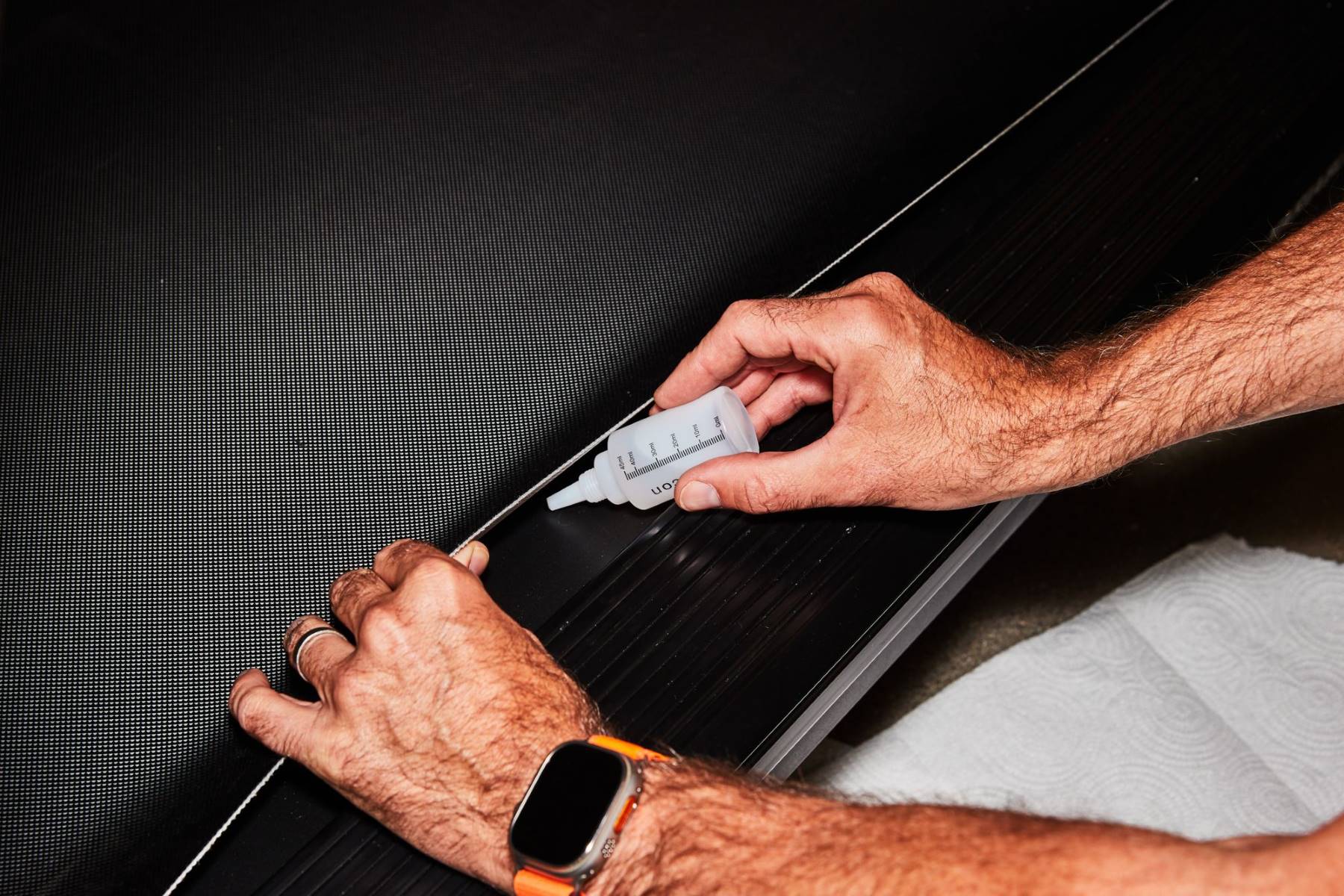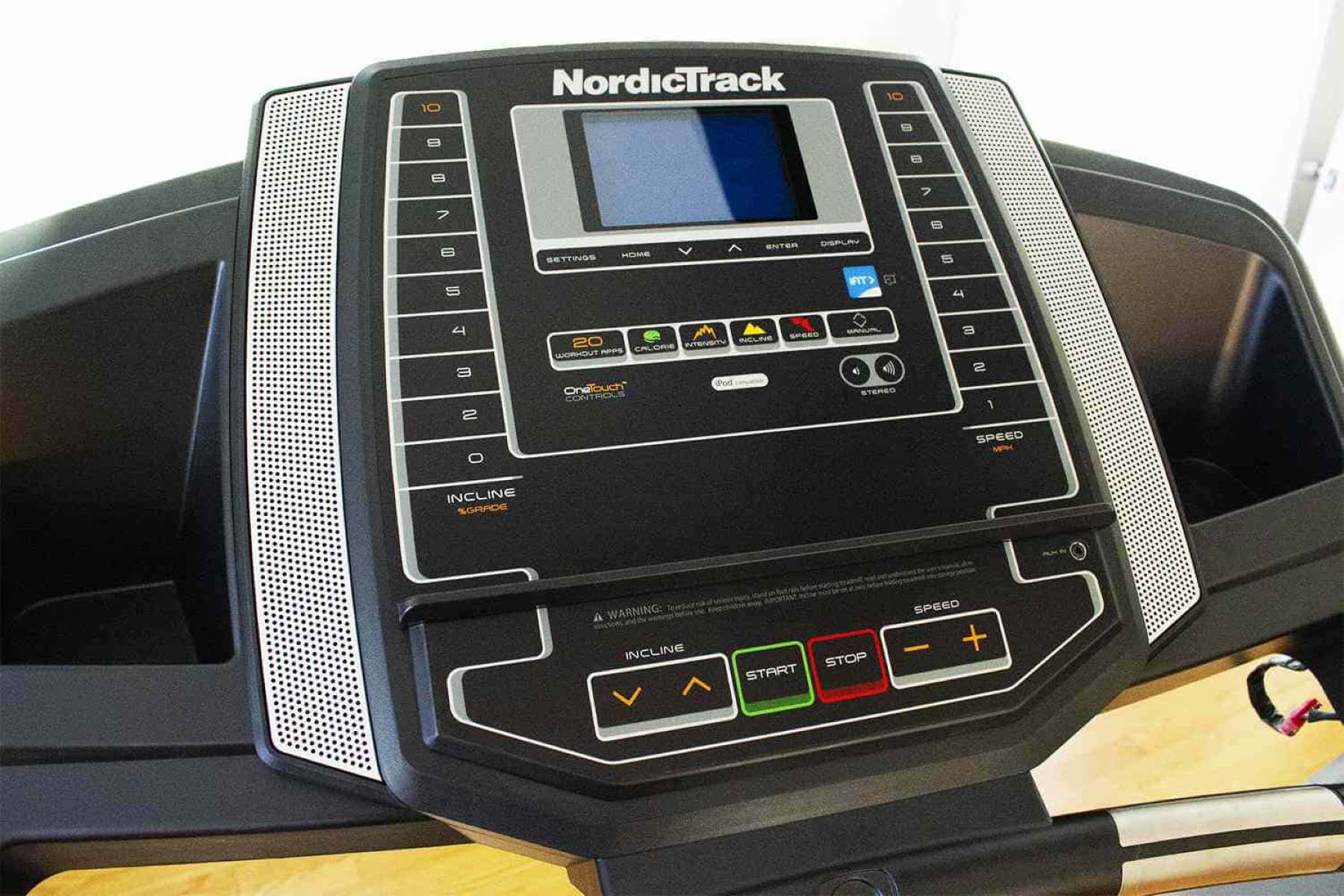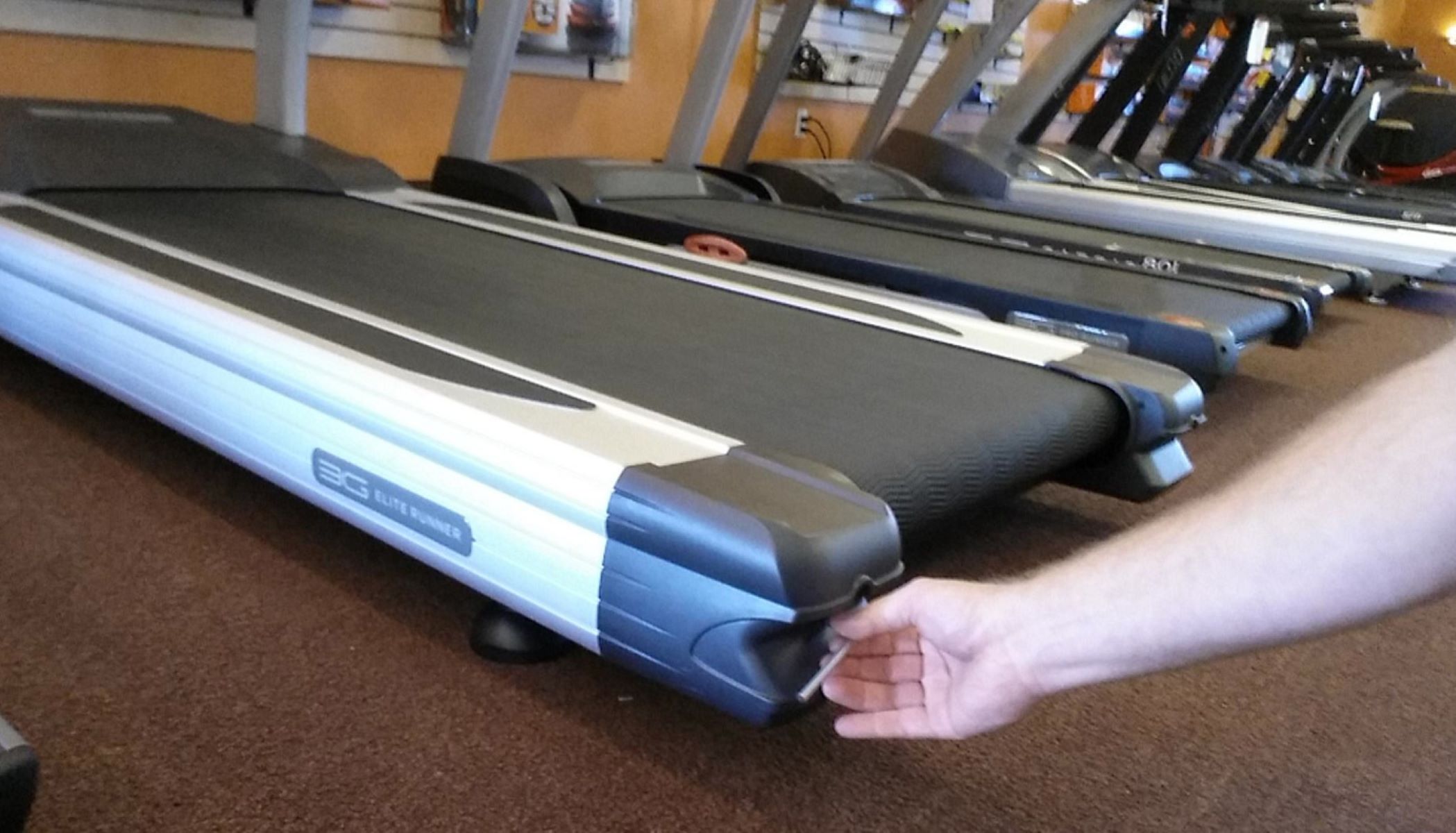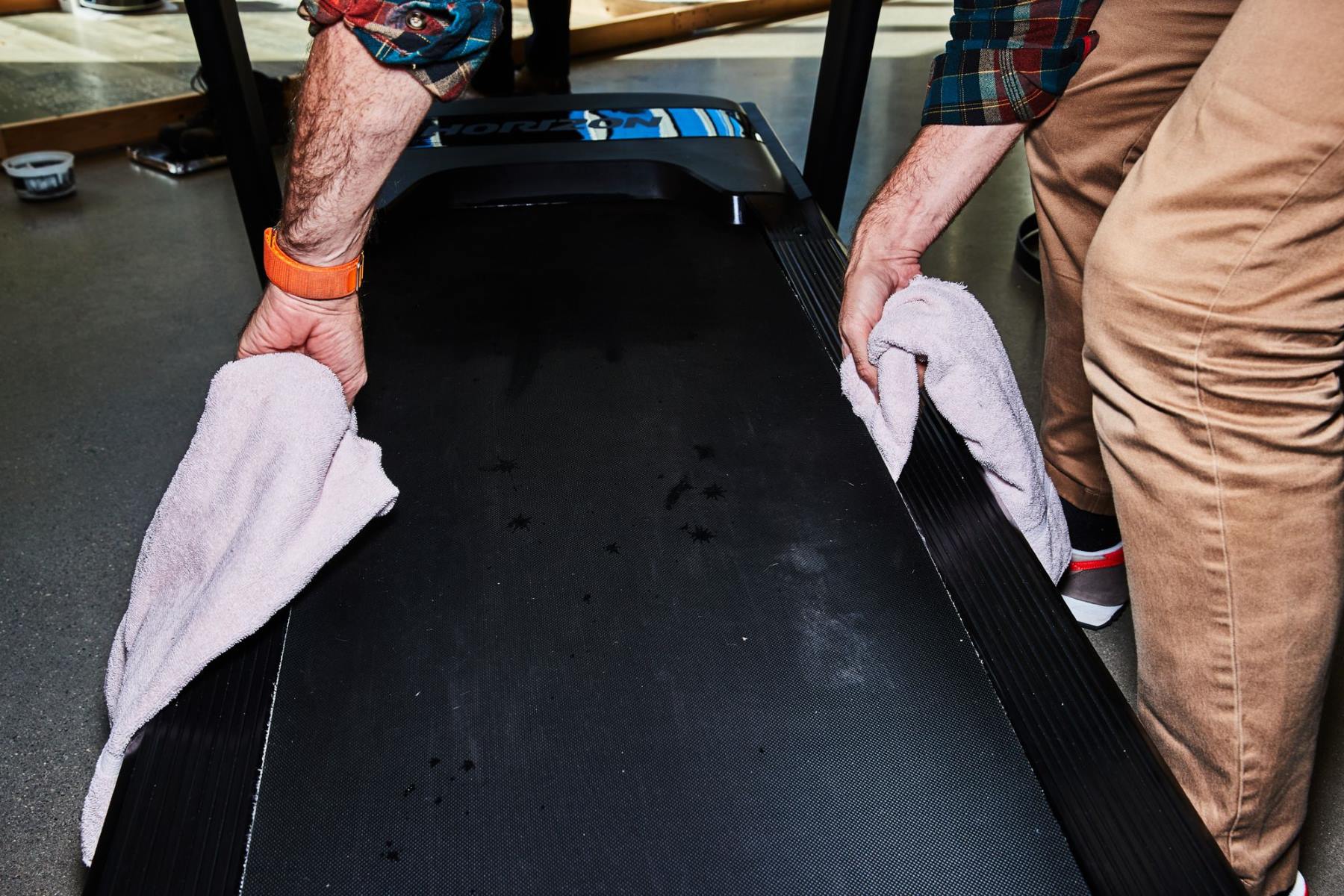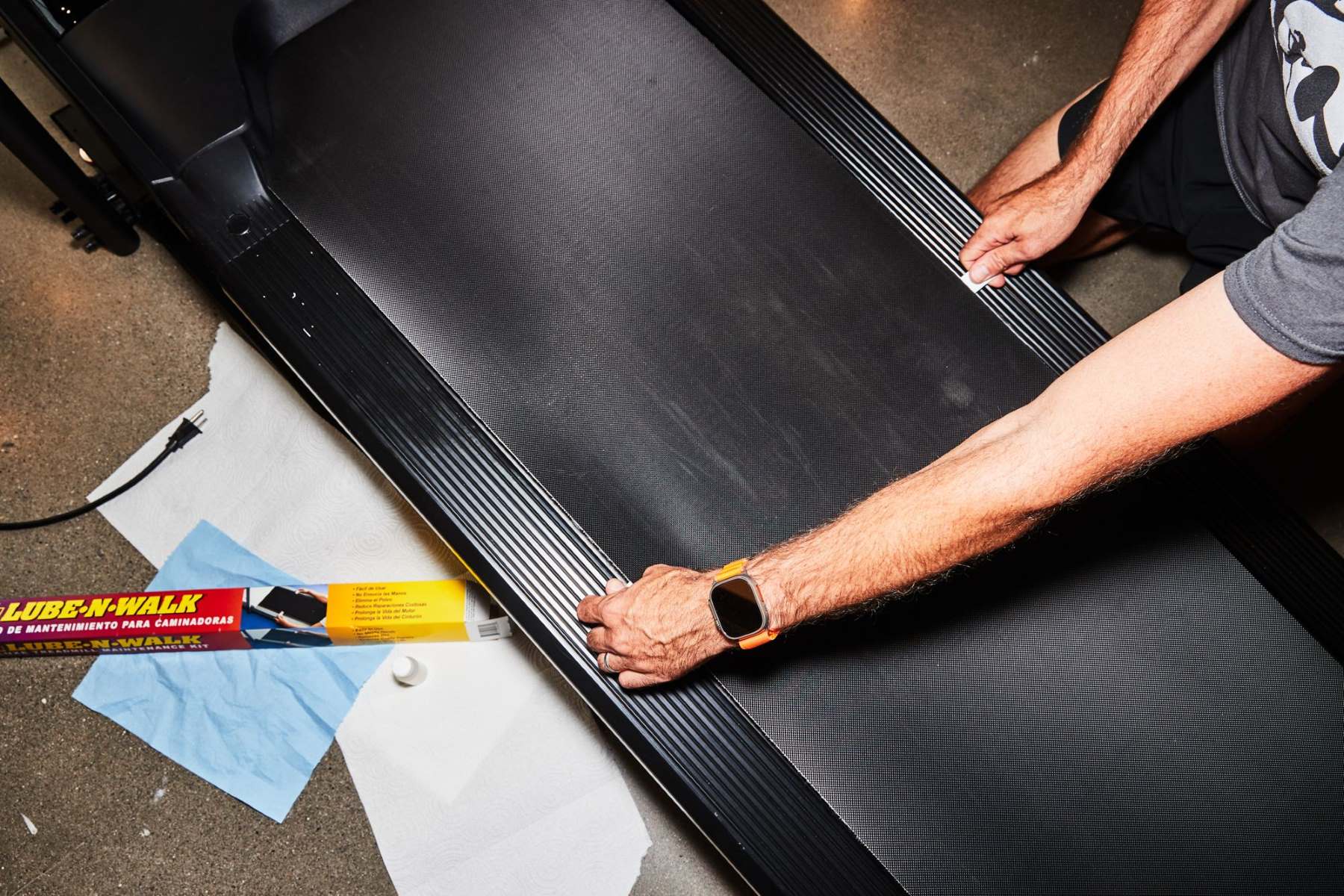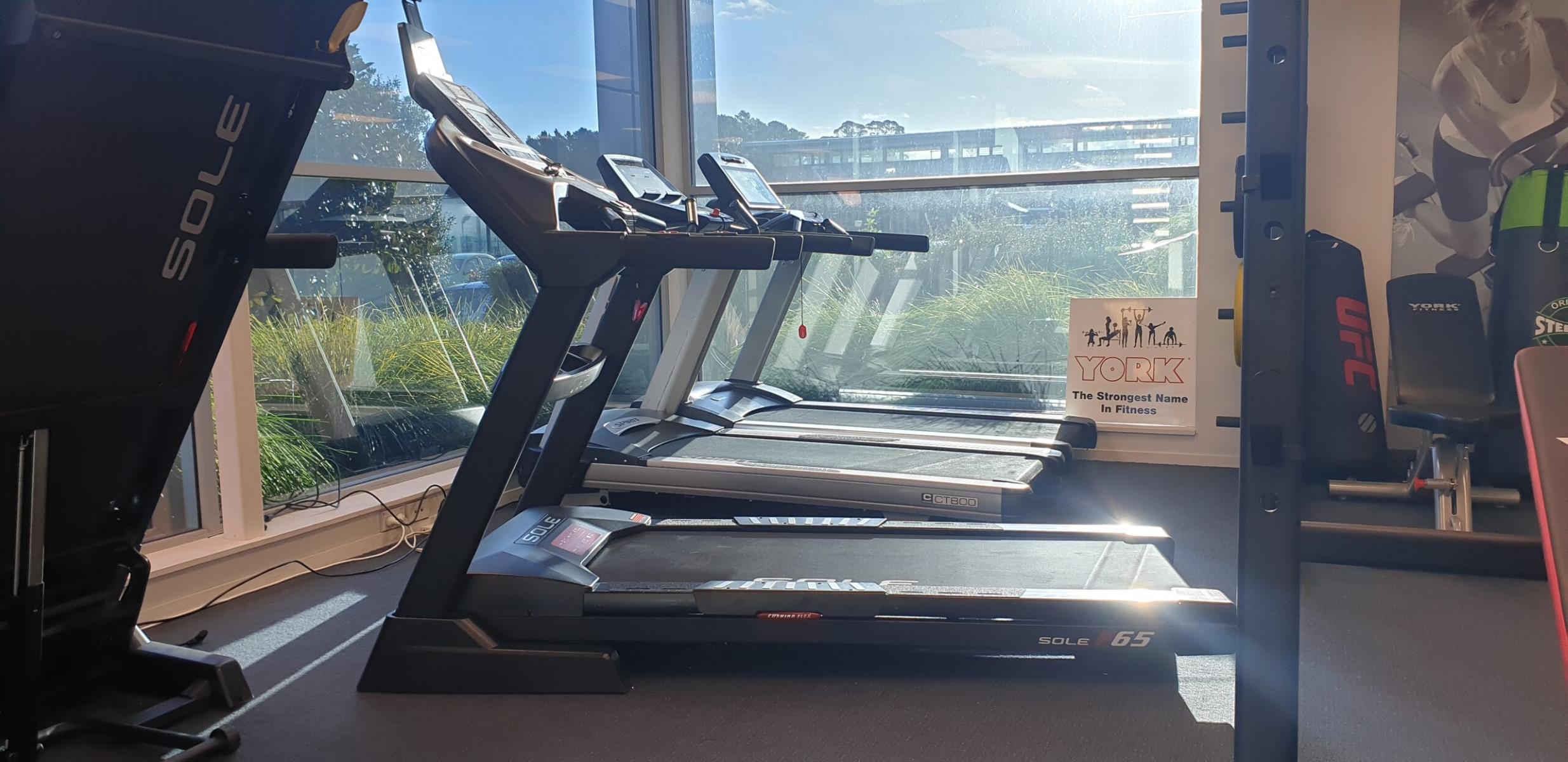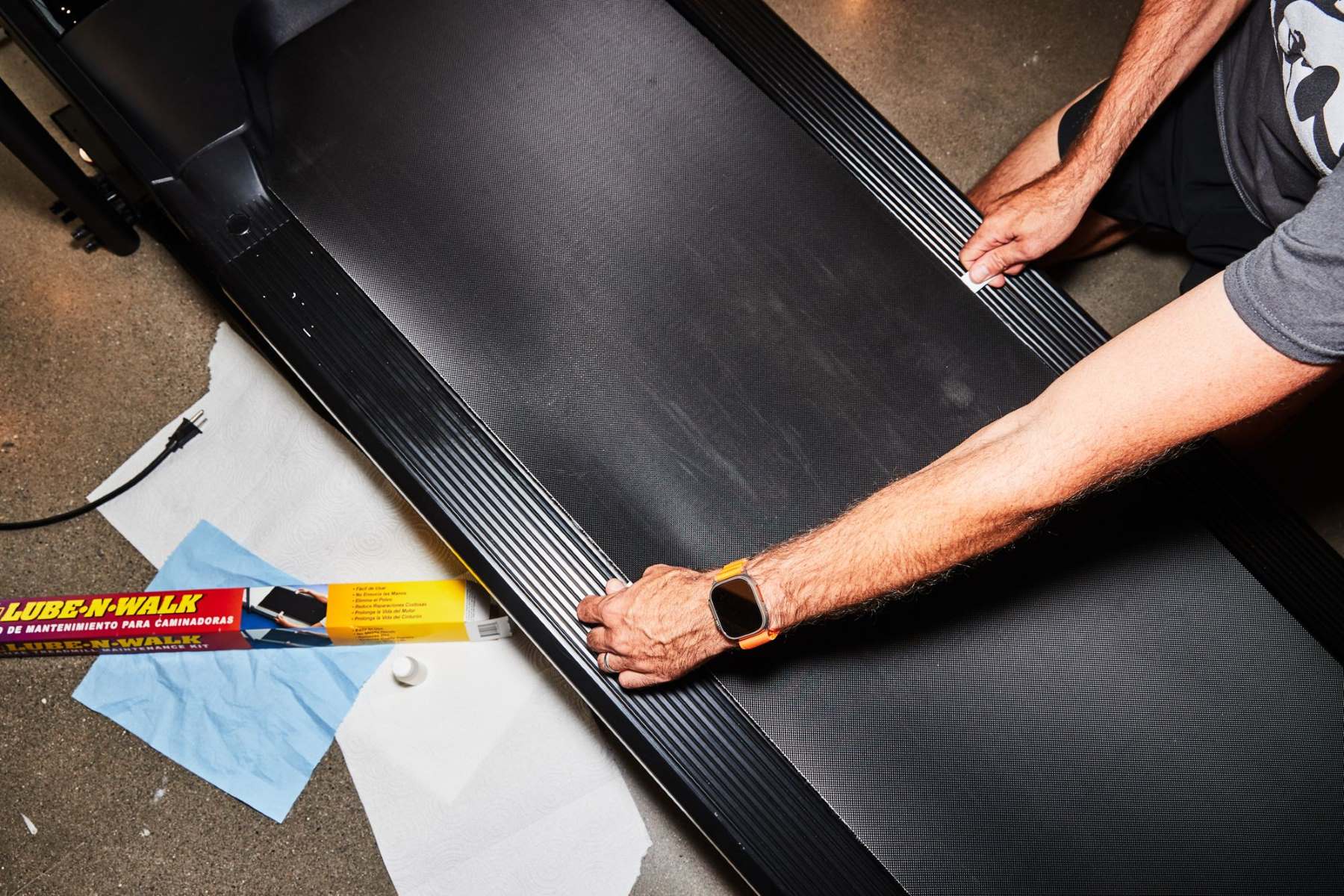Home>Misc>Featured>How Often Do You Need To Lubricate A Treadmill
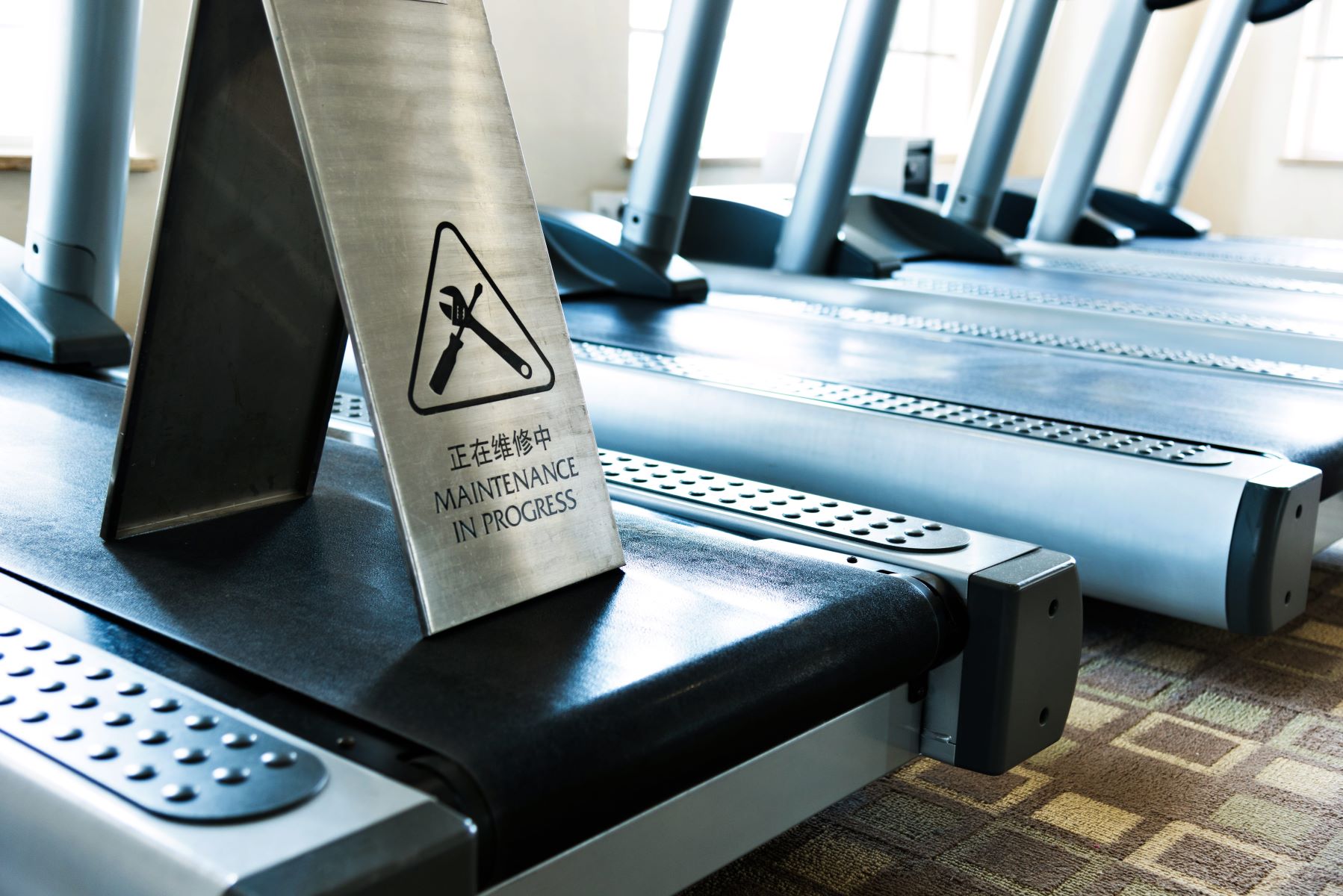

Featured
How Often Do You Need To Lubricate A Treadmill
Modified: January 2, 2024
Find out how often you should lubricate your treadmill to keep it running smoothly. Our featured article provides all the information you need to know.
Introduction
When it comes to maintaining the longevity and optimal performance of your treadmill, proper lubrication is key. Treadmill lubrication not only reduces friction between the belt and the deck but also helps prevent excessive wear and tear, ensuring a smooth and quiet operation.
Regular lubrication not only extends the lifespan of your treadmill but also enhances the overall user experience. Without adequate lubrication, the belt can become stiff and produce a squeaking noise, making your workout less enjoyable. Additionally, a lack of lubrication can lead to increased stress on the motor, potentially causing it to overheat and ultimately damaging your treadmill.
The frequency at which you need to lubricate your treadmill depends on several factors, including the type and model of your treadmill, the frequency and intensity of your workouts, and the environment in which your treadmill is located. Understanding these factors will help you determine the best lubrication schedule to keep your treadmill running smoothly.
In this article, we will explore the importance of lubricating your treadmill, the factors that impact the frequency of lubrication, and a step-by-step guide to properly lubricating your treadmill. Whether you’re a fitness enthusiast or a casual treadmill user, this information will help you maximize the performance and lifespan of your equipment.
Importance of Lubricating a Treadmill
Lubricating your treadmill is crucial for its optimal performance and longevity. Here are some key reasons why lubrication is important:
- Reduces Friction: A well-lubricated treadmill reduces the friction between the belt and the deck. This not only improves the overall functionality of the treadmill but also provides a smoother and more comfortable workout experience. When the belt and deck are properly lubricated, you can run or walk with ease, minimizing the risk of strain or injury.
- Prevents Excessive Wear and Tear: Over time, the continuous movement of the belt on the deck can lead to wear and tear. Lubrication creates a protective barrier that reduces the friction and minimizes the impact on the components of the treadmill. By regularly lubricating your treadmill, you can extend the lifespan of key parts, such as the motor, belt, and motor controller board, saving you from costly repairs or replacements.
- Ensures Smooth and Quiet Operation: A properly lubricated treadmill operates quietly and smoothly. Without lubrication, the belt can become stiff and produce irritating squeaking noises. These noises can be distracting and disrupt your workout session. By lubricating your treadmill, you can enjoy a quiet and peaceful exercise experience.
- Reduces Heat and Motor Stress: Friction caused by a lack of lubrication can generate excess heat. This heat can cause the motor to overheat, leading to potential damage or malfunction. By lubricating your treadmill, you reduce the amount of heat generated and minimize stress on the motor, helping to maintain its efficiency and longevity.
- Enhances Safety: A properly lubricated treadmill not only improves its performance but also reduces the risk of accidents. When the belt and deck are well-lubricated, there is less chance of the belt suddenly stopping or jerking, preventing potential falls or injuries. Prioritizing treadmill lubrication is a proactive step towards ensuring a safe and enjoyable workout environment.
By understanding the importance of lubricating your treadmill and its benefits, you can effectively maintain and prolong the lifespan of your equipment. In the next section, we will explore the factors that determine how often you should lubricate your treadmill.
Factors Affecting the Frequency of Treadmill Lubrication
The frequency at which you should lubricate your treadmill depends on various factors. Understanding these factors will help you determine the appropriate lubrication schedule for your specific treadmill model. Here are the key factors that can affect the frequency of treadmill lubrication:
- Treadmill Usage: The more frequently you use your treadmill, the more often it will require lubrication. Heavy usage, such as daily intense workouts or multiple users, can lead to increased friction, necessitating more frequent lubrication.
- Intensity of Workouts: High-intensity workouts, such as running or sprinting, put more stress on the treadmill components. The increased friction resulting from intense workouts may require more frequent lubrication compared to low-intensity activities like walking.
- Temperature and Humidity: The environment in which your treadmill is located can impact the lubrication frequency. High humidity levels can accelerate belt and deck wear, requiring more frequent lubrication. Similarly, extreme temperature variations can affect the viscosity of the lubricant, necessitating adjustment in lubrication frequency.
- Treadmill Age and Condition: Older treadmills or those in poor condition may require more frequent lubrication. As treadmills age, the components may wear out, increasing friction and reducing the effectiveness of lubrication. If your treadmill is older or shows signs of wear, it may need more frequent lubrication.
- Treadmill Model and Manufacturer’s Recommendations: Different treadmill models may have specific lubrication requirements as recommended by the manufacturer. Some models come with pre-lubricated belts, while others may require lubrication right out of the box. It is essential to refer to the manufacturer’s guidelines for the recommended lubrication frequency specific to your treadmill model.
- User Weight: The weight of the users can affect the wear and tear on the treadmill’s belt and deck. Heavier users put more pressure on the components, increasing friction. If you are on the heavier side, you may need to lubricate your treadmill more frequently.
Considering these factors will help you determine how often you need to lubricate your treadmill. In the next section, we will provide a recommended lubrication schedule for different treadmill models.
Recommended Lubrication Schedule for Different Treadmill Models
While the frequency of treadmill lubrication can vary depending on factors such as usage and environment, here are some general guidelines for different treadmill models:
- Residential Treadmills: For most residential treadmills, it is generally recommended to lubricate the belt every 6 to 12 months, or after every 150 to 200 hours of use. This frequency can vary depending on the factors mentioned earlier, such as usage intensity and user weight. Consult your treadmill’s manual or the manufacturer’s recommendations for the specific lubrication schedule.
- Commercial Treadmills: Commercial treadmills, typically found in gyms or fitness centers, require more frequent lubrication due to heavy usage. As a guideline, commercial treadmills should be lubricated every 3 to 6 months or after every 100 to 150 hours of use. However, it’s important to check the manufacturer’s guidelines for your specific commercial treadmill model.
- Folding Treadmills: Folding treadmills often have a different lubrication schedule due to their unique design. The folding mechanism adds additional stress to the treadmill’s components, making more frequent lubrication necessary. It is generally recommended to lubricate the belt every 3 to 6 months for folding treadmills, or after every 100 to 150 hours of use.
- Commercial Gym-grade Treadmills: Gym-grade treadmills in professional fitness facilities require routine maintenance and lubrication. These treadmills generally need to be lubricated every 1 to 3 months or after every 40 to 60 hours of use. Commercial gym-grade treadmills experience heavy usage, so regular lubrication is essential to keep them in optimal condition.
Please note that these guidelines are general recommendations, and the specific lubrication schedule for your treadmill may vary. Always consult the manufacturer’s guidelines or the user manual for your particular treadmill model to ensure you follow the recommended lubrication schedule. These guidelines will help you maintain the performance and longevity of your treadmill by keeping the components well lubricated.
In the next section, we will discuss the signs that indicate your treadmill needs lubrication.
Signs That Your Treadmill Needs Lubrication
Regular lubrication is essential for keeping your treadmill in optimal condition. Here are some signs that indicate your treadmill may need lubrication:
- Squeaking or Squealing Noises: If you notice a squeaking or squealing noise coming from your treadmill while in use, it is a clear indication that the belt and deck require lubrication. These noises are caused by the increased friction between the belt and deck due to a lack of lubrication.
- Inconsistent Belt Movement: A properly lubricated treadmill belt should move smoothly and consistently during your workouts. If you notice any irregular movements or jerking while walking or running on the treadmill, it may be a sign that lubrication is needed.
- Difficulty Adjusting Speed or Incline: If you are experiencing difficulty adjusting the speed or incline of your treadmill, it could be due to a lack of lubrication. Insufficient lubrication can result in increased friction on the motor, making it challenging to change the settings smoothly.
- Belt Slippage: A lubrication issue can cause the treadmill belt to slip, especially during intense workouts or when running at higher speeds. Belt slippage can be dangerous and may lead to falls or injuries. If you notice that the belt slips or skids while in use, it’s a clear indication that lubrication is required.
- Excessive Wear on the Belt or Deck: Regular inspection of the treadmill belt and deck can help you identify signs of excessive wear. If you notice uneven or frayed edges on the belt or visible scratching or scuffing on the deck, it may be an indication that the lubrication is insufficient. Proper lubrication can help minimize wear and tear on these crucial components.
- Inconsistent Treadmill Performance: If you notice a decline in the overall performance of your treadmill, such as decreased speed, increased noise, or increased resistance, it may be due to inadequate lubrication. Proper lubrication ensures optimal performance by reducing friction and maintaining the smooth operation of the treadmill.
Paying attention to these signs will help you identify when your treadmill needs lubrication. Regular maintenance and lubrication will not only improve the performance and lifespan of your treadmill but also ensure a safe and enjoyable workout experience. In the next section, we will provide a step-by-step guide to properly lubricating your treadmill.
Step-by-Step Guide to Lubricating a Treadmill
Lubricating your treadmill correctly is essential to ensure smooth operation and prolong its lifespan. Follow these steps to properly lubricate your treadmill:
- Check the User Manual: Refer to the user manual that came with your treadmill for specific instructions and recommendations provided by the manufacturer. Different treadmill models may have different lubrication requirements.
- Gather the Required Supplies: Collect all the necessary supplies for lubricating your treadmill. This typically includes treadmill lubricant, a clean cloth, and possibly an applicator if not provided with the lubricant.
- Power Off the Treadmill: Before lubricating, ensure that the treadmill is powered off and unplugged from the electrical outlet. This will prevent any accidents or injuries during the lubrication process.
- Clean the Belt and Deck: Use a clean cloth to wipe down the treadmill belt and deck. Remove any dust, debris, or dirt that may have accumulated. It’s important to have a clean surface for effective lubrication.
- Apply the Lubricant: Follow the manufacturer’s instructions for applying the lubricant. Typically, you will need to apply a small amount of lubricant to the underside of the belt, directly in the center. Use the applicator or a clean cloth to spread the lubricant evenly across the belt.
- Adjust the Belt: After applying the lubricant, turn on the treadmill and let it run at a slow speed for a few minutes. This helps to distribute the lubricant evenly across the belt and deck surface. Monitor the alignment and tension of the belt during this process and make any necessary adjustments as per the user manual’s instructions.
- Wipe Excess Lubricant: After the initial lubrication and belt adjustment, use a clean cloth to wipe off any excess lubricant from the belt and deck. A thin, even layer of lubricant is sufficient, and excess lubrication can attract dirt and debris, leading to a messy and inefficient treadmill operation.
- Power On and Test: Once the excess lubricant is wiped off, power on the treadmill and run it at a slow speed to ensure smooth and quiet operation. Listen for any unusual noises and check the belt tension and alignment again.
- Maintain a Regular Lubrication Schedule: To keep your treadmill running at its best, follow the manufacturer’s recommended lubrication schedule. Regular lubrication will help prolong the life of your treadmill and provide a comfortable workout experience.
Properly lubricating your treadmill ensures optimal performance and reduces the risk of damage or costly repairs. By following these steps, you can maintain a smooth and quiet treadmill operation for years to come. In the next section, we will highlight some common mistakes to avoid when lubricating a treadmill.
Common Mistakes to Avoid When Lubricating a Treadmill
Lubricating a treadmill is a crucial maintenance task, but it’s important to avoid common mistakes that can compromise the effectiveness of the lubrication process. Here are some mistakes to avoid:
- Using the Wrong Type of Lubricant: Using the wrong type of lubricant can damage the belt and deck of your treadmill. Make sure to use the lubricant recommended by the treadmill manufacturer. Using silicone-based lubricants is common, but check your user manual for any specific lubricant requirements.
- Over-Lubricating: Applying too much lubricant to the belt and deck can attract dust and debris, leading to messy and inefficient treadmill operation. Follow the manufacturer’s instructions for the recommended amount of lubricant to apply and ensure an even distribution.
- Under-Lubricating: Insufficient lubrication can result in increased friction and belt wear. It’s important to follow the recommended lubrication schedule and avoid skipping this crucial maintenance task. Regular lubrication helps maintain the smooth and quiet operation of your treadmill.
- Skipping Cleaning: Failing to clean the belt and deck before lubrication can lead to ineffective lubrication. Dust, debris, and dirt can accumulate on the surface, preventing the lubricant from properly penetrating the belt and reducing the lubrication’s effectiveness. Always clean the belt and deck before lubrication.
- Applying Lubricant on the Top Surface of the Belt: Lubricating the top surface of the belt can make it slippery and unsafe for running or walking. Remember that the lubricant should be applied to the underside of the belt, in direct contact with the deck.
- Neglecting Regular Maintenance: Lubrication is just one aspect of treadmill maintenance. Neglecting other maintenance tasks, such as belt tension adjustments, regular cleaning, and replacing worn components, can compromise the performance and lifespan of your treadmill. Follow the manufacturer’s guidelines for overall treadmill maintenance.
- Not Checking the User Manual: Each treadmill model may have unique lubrication requirements. It’s essential to check the user manual or contact the manufacturer for specific guidelines. Following the recommended lubrication schedule and instructions will ensure that you are properly maintaining your treadmill.
- Ignoring Signs of Treadmill Problems: Lubrication is not a solution to all treadmill problems. If you notice persistent issues like excessive noise, belt slippage, or inconsistent performance, it may indicate underlying mechanical issues. Don’t ignore these signs and consider contacting a professional technician for a thorough inspection and repairs.
Avoiding these common mistakes will help you properly lubricate your treadmill and maintain its optimal performance. By following the guidelines and taking care of your treadmill, you can enjoy smooth and quiet workouts for years to come. In the next section, we will conclude with a summary of the importance of regular treadmill lubrication and proper maintenance.
Conclusion
Regular lubrication is a vital aspect of treadmill maintenance. By properly lubricating your treadmill, you can reduce friction, prevent excessive wear and tear, ensure smooth and quiet operation, and prolong the lifespan of your equipment. Neglecting to lubricate your treadmill can lead to issues such as belt slippage, increased noise, and motor stress, compromising the performance and safety of your workouts.
To determine the appropriate lubrication schedule for your treadmill, consider factors such as usage frequency, intensity of workouts, temperature and humidity levels, treadmill age and condition, and the manufacturer’s recommendations. Refer to your treadmill’s user manual for specific instructions and lubricant requirements.
Remember to avoid common mistakes like using the wrong type or amount of lubricant, neglecting cleaning and regular maintenance tasks, and ignoring signs of treadmill problems. Adhering to these guidelines will help you properly lubricate your treadmill and maintain its optimal performance.
Regular treadmill lubrication is a proactive step towards keeping your equipment in top shape and ensuring a safe and enjoyable workout experience. Incorporate lubrication into your treadmill maintenance routine, and your treadmill will reward you with many years of reliable service.
